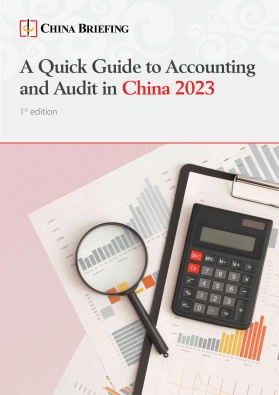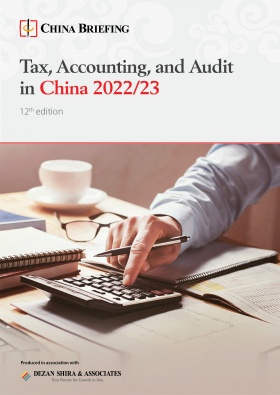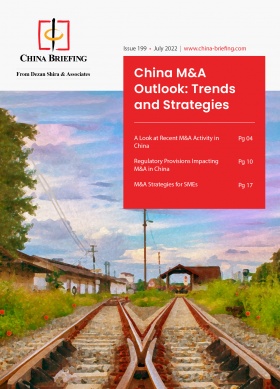China Officially Launches New Private Pension Scheme – Who Can Take Part?
A select list of banks, wealth management funds, and insurance companies have officially been given the green light to launch private pension products in certain cities in China. The kick-off comes after many months of deliberations on regulations for the budding industry, which include requirements for companies’ participation as well as regulations on the products that can be offered. We discuss which companies and products can participate in the China private pension industry and how the industry may continue to develop beyond the initial pilot phase.
China has officially launched its new private pension scheme, the third pillar of China’s old-age pension system.
In a notice published on November 25, 2022, the Ministry of Human Resources and Social Security (MOHRSS) issued a notice stating that people living in 36 cities can begin to open private pension accounts. This has finally set off what is expected to become a US$1.7 trillion industry by 2025.
However, the industry is currently still limited to certain areas, and the barriers to entry are relatively high. This means, at present, only a handful of companies will be able to participate in the industry. Below, we look at the current requirements for companies and products to participate in China’s budding private pension industry.
Webinar – China’s Silver Economy: Tapping into the Rising Spending Power of the Elderly Population
Tuesday, April 16, 2024 | 10:00 AM CEST / 4:00 PM China
Join us for an insightful webinar led by Ines Liu, Senior Manager of International Business Advisory, as she explores the investment potential within China’s elderly market. In this session, Ines will offer a comprehensive analysis of market opportunities, highlighting industrial prospects for foreign investors and discussing promising business models and other crucial areas.
This webinar is FREE of charge.
A timeline of the development of China’s private pension scheme
China’s private pension scheme was officially set in motion on April 21, 2022, when China’s State Council released a document titled Opinions on Promoting the Development of Personal Pensions (the “opinions”). The opinions provided a framework for the development of the industry, and included some basic outlines for the structure and implementation of the scheme, such as limits on annual deposits and the scope of participation by individuals.
However, a pilot program for private pension products had previously been run in select cities across China since September 2021, with certain wealth management companies permitted to test private pension products.
On September 26, 2022, at a weekly State Council meeting, Premier Li Keqiang announced new tax incentives to spur the development of private pensions. These are pre-tax deductions of up to RMB 12,000 (US$1,667) from the annual taxable income of participants in private pension schemes and a reduction of the tax burden on pension benefits from 7.5 percent to 3 percent. These tax incentives were formally issued through a notice from the Ministry of Finance (MOF) and State Tax Administration (STA) on November 4, 2022.
On November 4, 2022, the China Banking and Insurance Regulatory Commission (CBIRC) issued the exposure draft of the Interim Measures for the Administration of Personal Pension Business of Commercial Banks and Wealth Management Companies (the “Interim Measures for Company Participation”) for public comment until November 13. These measures detail the regulations for the participation of commercial banks and wealth management companies in the private pension market. The final version of the Interim Measures for Company Participation was released on November 17.
Also on November 4, the CBIRC, MOF, STA, MOHRSS, and the China Securities Regulatory Commission (CSRC) released the Measures for the Implementation of Personal Pensions (the “Implementation Measures”), which outlines the rules and requirements for the implementation of private pensions. On the same day, the CSRC released the Interim Provisions on the Management of Personal Pension Investment in Publicly Offered Securities Investment Fund Business (the “Interim Provisions on Investment”), which regulates which mutual fund products can participate in the private pension scheme.
FAQs on China’s personal pension scheme
Where has the pension scheme been launched?
The private pension scheme is still not available to all consumers in China. The scheme is currently being piloted in select cities, and on November 25, 2022, the MOHRSS released the list of 36 cities in which the pilot pension scheme will be initially launched. The cities represent 31 of China’s provinces, municipalities, and autonomous regions, and include Beijing, Tianjin, Shanghai, Guangzhou, Shenzhen, Hangzhou, and Chengdu.
Which companies can take part in the new pension scheme?
According to a notice released along with the final version of the Interim Measures for Company Participation, the companies that are permitted to offer private pension products in the initial period are:
- National commercial banks whose main prudential regulatory indicators meet regulatory requirements and have a net tier-1 capital of more than RMB 100 billion (US$14.2 billion) as of the end of the third quarter of 2022;
- Municipal commercial banks with strong cross-regional service capabilities; and
- Wealth management companies that have been included in the pension wealth management product pilot program as of the third quarter of 2022.
The pilot program mentioned above was first announced in September 2021 and was initially set to last one year. At this time, the pilot program included three wealth management institutions, which were only permitted to raise up to RMB 10 billion (US$1.4 billion) for pension wealth management products and were only permitted to operate within certain cities. In February 2022, the pilot program was further expanded to more cities and to 10 institutions.
On November 23, the CBIRC also clarified the requirements for insurance companies to participate in the private pension industry. These are:
- The owner’s equity at the end of the previous year must be at least RMB 5 billion and at least 75 percent of the company’s share capital (paid-in capital);
- The comprehensive solvency adequacy ratio at the end of the previous year must be at least 150 percent, and the core solvency adequacy ratio is at least 75 percent;
- The liability reserve coverage ratio at the end of the previous year is at least 100 percent;
- The comprehensive risk rating in the last four quarters is not lower than category B;
- It has not been subject to major administrative punishments by financial regulatory agencies in the last three years;
- It has a complete information management system, realizes system connection with the banking and insurance industry personal pension information platform, and performs information registration and interaction according to relevant requirements;
- Other conditions prescribed by the CBIRC.
As of November 18, the CSRC has announced 34 companies that have received approval to participate in the private pension scheme. These are:
- Six state-owned banks: Industrial and Commercial Bank of China (ICBC), Agricultural Bank of China (ABC), Bank of China (BOC), China Construction Bank (CCB), Bank of Communications, and Postal Savings Bank of China;
- 12 joint-stock banks: CITIC Bank, Everbright Bank, Huaxia Bank, Minsheng Bank, China Merchants Bank (CMB), China Industrial Bank (CIB), Ping An Bank, Guangfa Bank, Shanghai Pudong Development Bank (SPDB), Zheshang Bank, Bohai Bank, and Hengfeng Bank;
- Five municipal commercial banks: Bank of Beijing, Bank of Shanghai, Bank of Jiangsu, Bank of Ningbo, and Bank of Nanjing; and
- 11 wealth management companies: ICBC Wealth Management, ABC Management, BOC Wealth Management, CCB Wealth Management, Bank of Communications Wealth Management, China Post Wealth Management, BlackRock Jianxin Wealth Management, Everbright Wealth Management, CMB Wealth Management, CIB Wealth Management, and CNCB Wealth Management.
Which products are available in the private pension scheme?
Under the Interim Provisions on Investment, products that pension funds invest in should have the characteristics of being “safe, mature and stable, have standardized objectives, and a focus on long-term value preservation”. They must also comply with laws and regulations and the provisions of the CSRC. These include:
- Pension target funds with at least RMB 50 million of assets at the end of the last four quarters;
- Stock funds, hybrid funds, bond funds, funds of funds, and other funds with stable investment styles, clear investment strategies, good long-term performance, and sound operation compliance that are suitable for long-term personal pension investment.
Meanwhile, per the CBIRC notice mentioned above, insurance companies are permitted to offer private pension insurance products, such as annuity insurance, endowment insurance, and other products recognized by the CBIRC. These products need to meet the following requirements:
- Have an insurance period of at least five years;
- The insurance liability is limited to the payment of survival insurance benefits, the payment of insurance benefits at maturity, death, total disability, disability or nursing status;
- They can provide various payment methods, such as single payment, regular payments, or irregular payments to meet the payment requirements of individual participants;
- Other requirements stipulated by the CBIRC.
Outlook and development trajectory of the private pension market
As it stands, the barrier of entry to companies participating in China’s private pension market is relatively high, and currently only a few banks and wealth management funds have been given the greenlight to participate. However, the CBIRC’s recent expansion to allow more insurance companies to offer pension insurance products will provide opportunities for more companies – including foreign companies – to participate in the industry.
In addition, the private pension scheme is still in its infancy, and currently, the bar has been set deliberately high to ensure the security and quality of products that are offered to the public. As the market grows and regulators learn how to ensure healthy and standardized development, we are likely to see the scheme being rolled out to more regions and the lowering of barriers of entry for both companies and the types of products that can be offered.
About Us
China Briefing is written and produced by Dezan Shira & Associates. The practice assists foreign investors into China and has done so since 1992 through offices in Beijing, Tianjin, Dalian, Qingdao, Shanghai, Hangzhou, Ningbo, Suzhou, Guangzhou, Dongguan, Zhongshan, Shenzhen, and Hong Kong. Please contact the firm for assistance in China at china@dezshira.com.
Dezan Shira & Associates has offices in Vietnam, Indonesia, Singapore, United States, Germany, Italy, India, and Russia, in addition to our trade research facilities along the Belt & Road Initiative. We also have partner firms assisting foreign investors in The Philippines, Malaysia, Thailand, Bangladesh.
- Previous Article China-Mongolia: Bilateral Trade, Investment, and Future Prospects
- Next Article New Amendments to BVI Business Companies Act: Impact on Hong Kong Companies and Companies Holding China Assets









